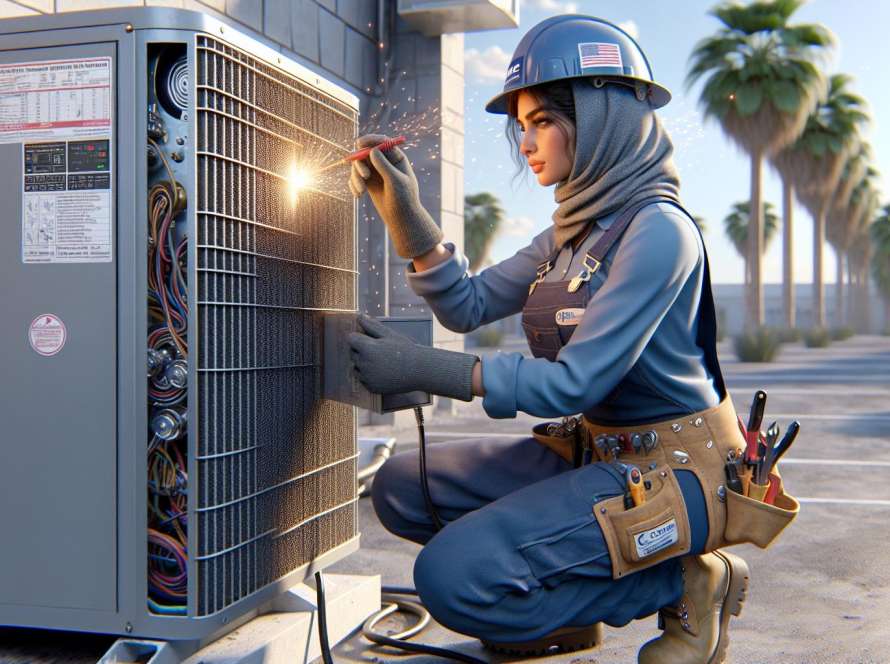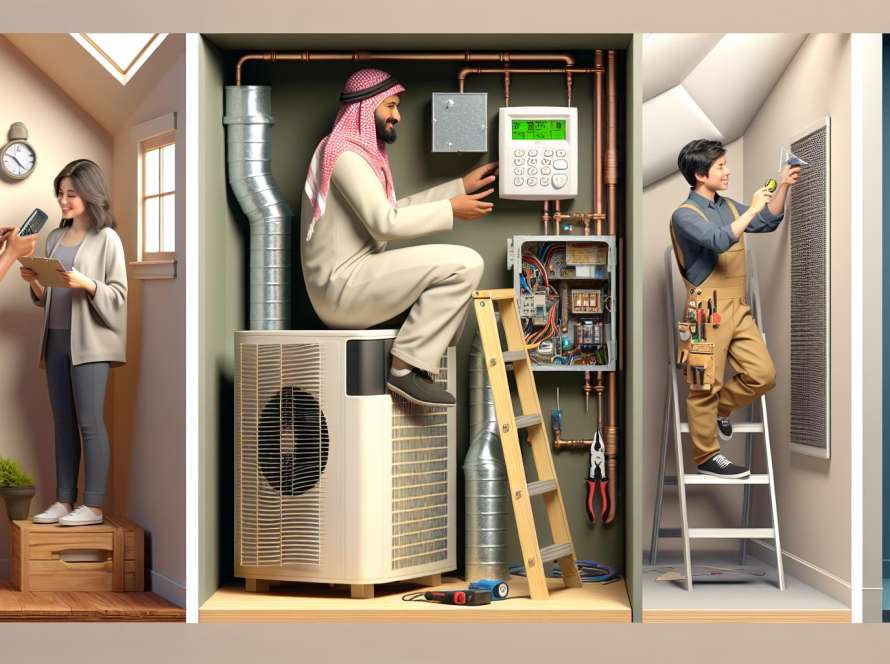Living in Florida means we’re no strangers to the sweltering heat and oppressive humidity that comes with it. And when it comes to keeping cool, our trusty AC units are our saving grace. But in a state where humidity levels can reach sky-high, ensuring optimal AC performance is key to staying comfortable year-round. From battling mold and mildew to preventing energy wastage, there are plenty of reasons why maintaining our AC units is crucial for both our comfort and our wallets.
In this article, we’ll delve into the ins and outs of achieving optimal AC performance in the face of Florida’s relentless humidity. We’ll explore practical tips, expert advice, and innovative solutions to help us tackle the challenges of keeping our AC units running efficiently in this unique climate. So, let’s gear up to beat the heat and humidity together by mastering the art of maximizing our AC’s performance for a cooler and more comfortable living environment.
Understanding the Impact of Florida’s Humidity on AC Performance
Humidity in Florida can significantly affect the performance of your AC unit. Let’s delve into how this factor plays a crucial role in maintaining optimal cooling in your home:
For Beginners: Mastering the Basics
- Humidity Levels: Understand that Florida’s high humidity levels make it harder for sweat to evaporate off your skin, making you feel hotter.
- AC Strain: Excessive humidity can cause your AC unit to work harder, leading to increased energy consumption and potential breakdowns.
- Dehumidification: Consider using a dehumidifier alongside your AC to help control moisture levels indoors.
For Intermediate Homeowners: Enhancing Your AC Efficiency
- Proper Ventilation: Ensure good ventilation in your home to help reduce humidity levels and ease the burden on your AC.
- Regular Maintenance: Schedule routine maintenance checks to keep your AC operating efficiently in Florida’s humid climate.
- Programmable Thermostat: Invest in a programmable thermostat to manage indoor humidity levels and save on energy costs.
- SEER Ratings: Opt for an AC unit with a high Seasonal Energy Efficiency Ratio (SEER) to combat humidity effectively.
- Humidity Control Settings: Explore your AC unit’s settings for humidity control features and make adjustments for maximum comfort.
- Smart AC Technology: Consider upgrading to a smart AC system that offers advanced humidity control options for precise climate management.
In Florida’s humid environment, understanding how humidity impacts your AC performance is essential for maximizing comfort and energy efficiency. By implementing these strategies, you can ensure your AC unit runs optimally, keeping your home cool and comfortable throughout the year.
Importance of Regular Maintenance for AC Units in High-Humidity Areas

In Florida’s high-humidity climate, regular maintenance for AC units is crucial to ensure optimal performance and longevity. Keeping your air conditioner in top condition not only enhances cooling efficiency but also helps prevent costly breakdowns. Let’s dive into different maintenance tasks based on varying experience levels:
For Beginners: Basic Maintenance Steps
- Regular filter changes: Replace or clean your AC filters every 1-3 months to maintain good airflow.
- Check thermostat settings: Ensure your thermostat is set to the right temperature for comfort and efficiency.
- Inspect air vents: Make sure air vents are clean and unobstructed to allow proper airflow.
- Clear debris: Keep the area around your outdoor unit clear of debris, vegetation, and obstructions.
For Intermediate Users: Enhanced Maintenance Practices
- Professional tune-ups: Schedule annual maintenance with a qualified technician to inspect and service your AC system.
- Duct inspection: Have your ductwork checked for leaks or damage that could reduce efficiency.
- Condensate drain cleaning: Clear the condensate drain to prevent clogs and water damage.
- Refrigerant level check: Ensure refrigerant levels are adequate for optimal cooling performance.
- Invest in smart thermostats: Upgrade to a programmable thermostat for precise temperature control and energy savings.
- Seal ductwork: Consider sealing and insulating ducts to improve efficiency and airflow.
- Upgrade to high-efficiency units: Invest in a high SEER-rated AC unit for improved performance and energy savings.
- Consider humidity control: Explore options like dehumidifiers or HVAC systems with enhanced humidity control features.
Regular maintenance is key to ensuring your AC unit operates efficiently, effectively, and durably in Florida’s humid environment. By following these maintenance tips tailored to your experience level, you can maximize comfort and energy savings throughout the year.
Tips for Improving AC Efficiency in a Humid Climate
For Beginners: Mastering the Basics
- Change your air filter regularly, at least every 90 days, to maintain airflow and prevent dust buildup.
- Keep your thermostat at a consistent temperature, ideally between 72-78°F, to reduce humidity and prevent the system from overworking.
- Schedule annual professional maintenance to ensure optimal performance and catch any potential issues early on.
For Intermediate Users: Enhancing Your Efficiency
- Consider installing a smart thermostat to optimize cooling schedules based on your habits and save energy.
- Seal ductwork to prevent air leaks and ensure that cooled air reaches its destination efficiently.
- Upgrade to a high-efficiency AC unit with a SEER rating of 16 or higher for increased energy savings.
- Invest in a dehumidification system to control moisture levels and enhance comfort in your home.
- Schedule regular duct inspections to detect and address any leaks or blockages that may impact efficiency.
- Explore zoning systems to cool specific areas of your home as needed, reducing energy waste.
| Key Point | Value |
|---|---|
| Average Thermostat Temperature | 72-78°F |
| Recommended SEER Rating for Efficiency | 16 or higher |
| Ideal Air Filter Replacement Frequency | Every 90 days |
Dealing with Common AC Issues Caused by High Humidity
For Beginners: Identifying and Addressing Basic Concerns
- Leaking Water: Check for clogged drain lines and ensure proper drainage.
- Frost Build-up: Verify air filters are clean and not restricting airflow.
- Unusual Odors: Replace air filters and consider professional inspection.
For Intermediate Users: Implementing Proactive Solutions
- Condensation Problems: Insulate ductwork to prevent moisture buildup.
- Inconsistent Cooling: Consider upgrading to a dehumidification system.
- Poor Air Quality: Schedule regular duct inspections and cleanings.
- Moisture Control: Invest in a zoning system for targeted cooling in specific areas.
- Energy Efficiency: Upgrade to units with a SEER rating of 16 or higher for maximum efficiency.
- Long-term Maintenance: Explore smart thermostats for precise temperature control.
| Benefits | Challenges |
| Enhanced comfort | Increased energy expenses |
| Improved air quality | Potential system upgrades |
| Energy efficiency | Regular maintenance requirements |
Maintaining optimal AC performance in high humidity conditions requires a blend of preventive measures, technological enhancements, and regular maintenance. By addressing common issues at varying levels of complexity, we can ensure our AC systems operate efficiently and effectively, even in Florida’s challenging climate.
Conclusion
Maintaining optimal AC performance in Florida’s high humidity conditions is crucial for enhanced comfort, improved air quality, and energy efficiency. By addressing common issues like leaking water, frost build-up, and condensation problems, we can ensure our AC units function effectively. Investing in a zoning system, upgrading to high SEER-rated units, and utilizing smart thermostats are key steps towards achieving peak performance. Regular maintenance and preventive measures play a vital role in maximizing AC efficiency. While challenges such as increased energy expenses exist, the benefits far outweigh them. Embracing technological advancements and staying proactive will help us combat humidity-related AC issues successfully.

